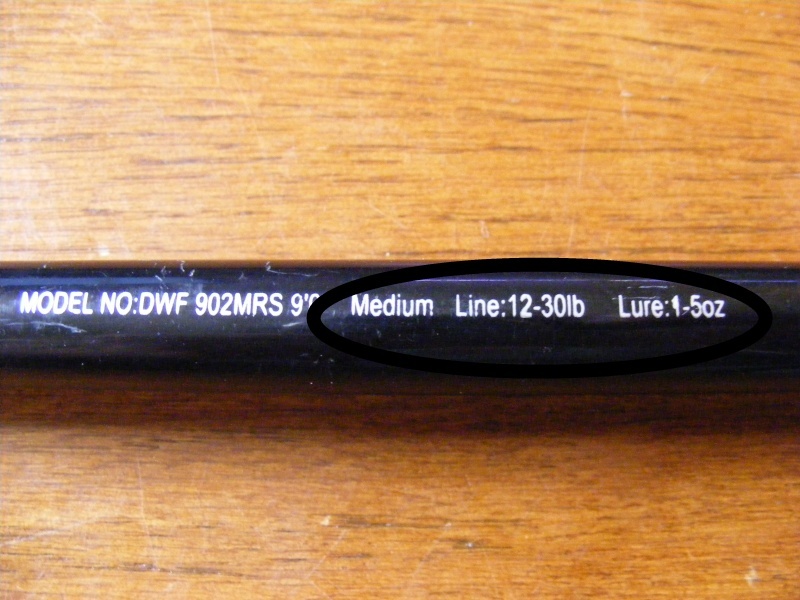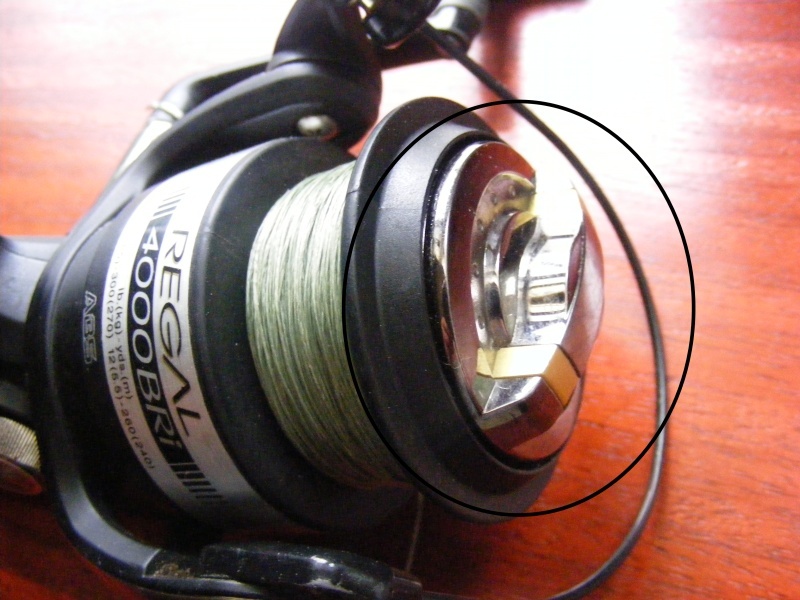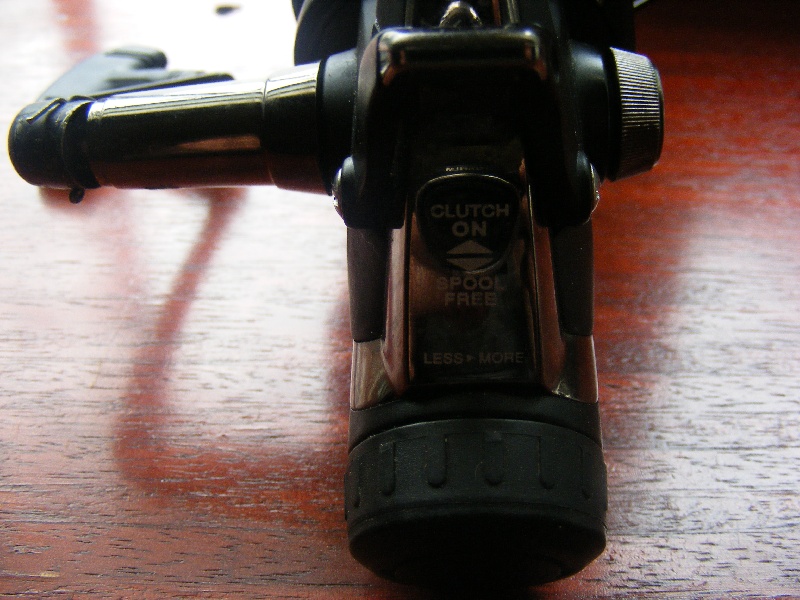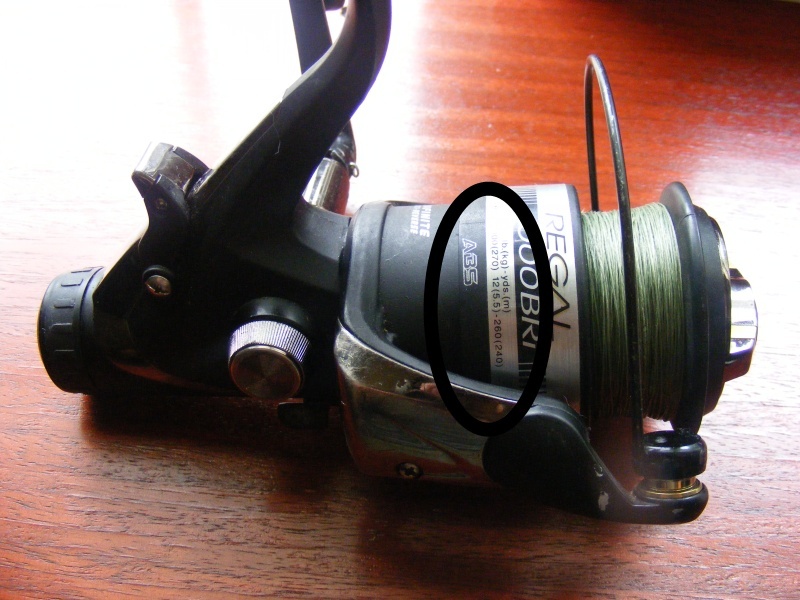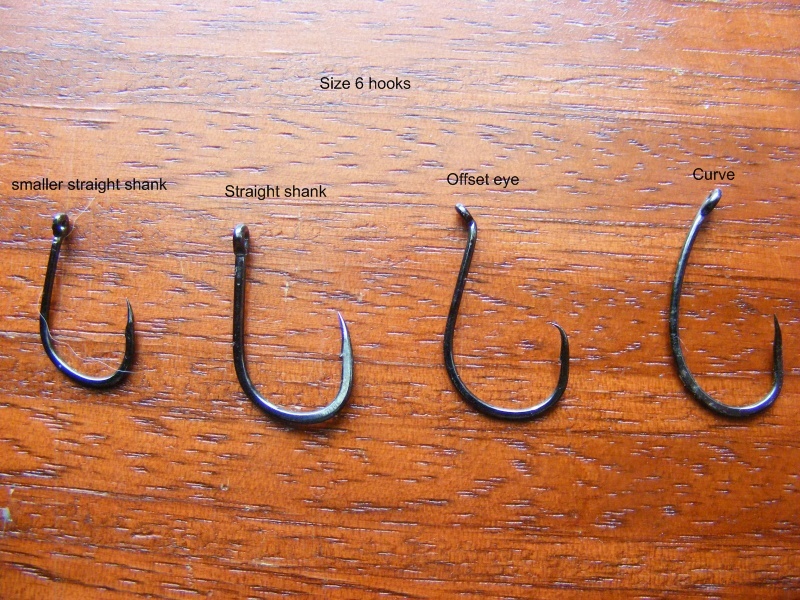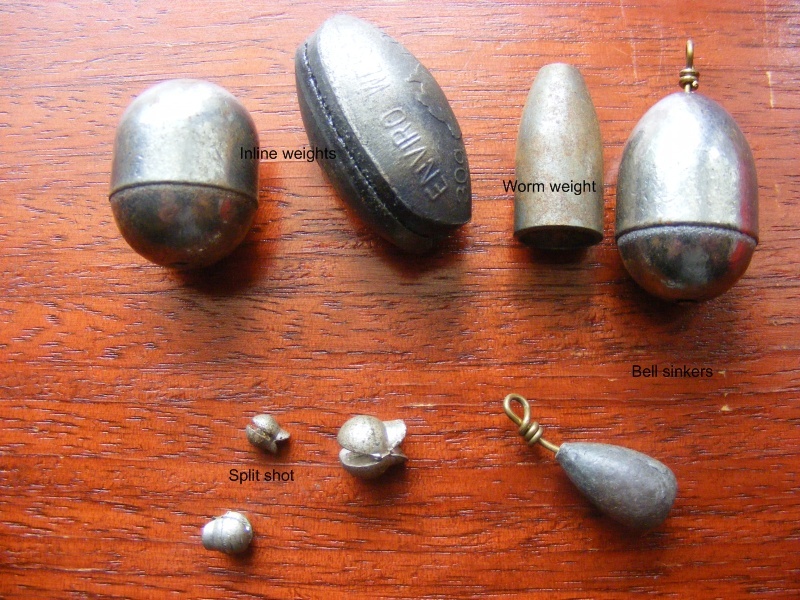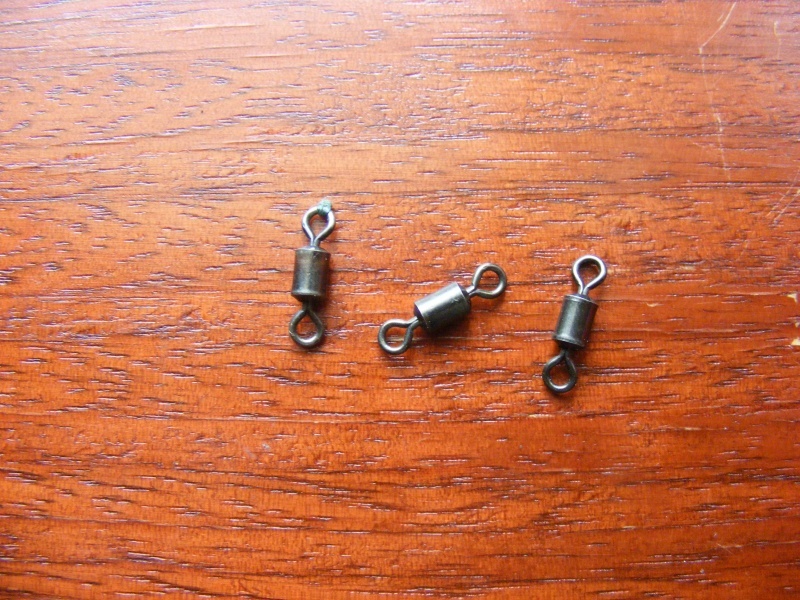One of the questions I get asked most is, do I need all these expensive things to catch carp? I thought carp were easy...
The answer is a simple no, you do not need all the expensive items to catch carp. The beauty of carp fishing is that it is as simple or as complex as you want to make it. People who have bite alarms and 12 foot poles will catch carp, but so will people with 7 foot poles and a few sticks they found out of the woods. I will say however that, at least in my experience, the more advanced carp anglers will prevail in harder waters where having plenty of options and tactics is helpful. Most waters that hold carp will allow all anglers a chance to have at these giants of the river!
Let us start with poles. I prefer 12 foot poles mainly for the advantage of casting long distances, the ability to fight carp around snags that shorter poles would not allow me to reach and over all control that they offer. Many 7 foot poles you will find at stores like Wal-mart, Dicks, etc are made for bass or trout and tend to be much more "bendy" then the stiffer longer poles. This is not a bad thing though, but it can make fighting large fish in smaller areas tougher. Patience is key whichever type of pole you use. Even with a stiff pole you never want to try and pull a carp to you. Trying to overpower them when they are running the opposite direction will almost certainly snap your line, or pull the hook from their mouths. If your new to carping I'd recommend looking for a 6-9 foot pole, that is able to handle 1-3 oz weight, most days you can find these for roughly 20-40 dollars.
The next important part are reels. Many times you will find a set up that comes with a rod/reel. These are fine though you'll probably want to change the line that comes with them. Many reels come with only 1 drag which is typically on top of the spool, but can be quite possibly below. Drag is the term used when referring to line tension on the spool. Meaning if you have 15 pound test line and a 20 pound fish pulls as hard as he can he will snap that line. However drag allows you to set the tension at the spool for less then the line, so in the same example of 15 pound line, you can set the drag to say 8 pound pull. This means when the 20 pound fish pulls 8 pounds line will pull off the spool instead of snapping.
If you are newer to fishing in general this can be a tricky part to learn. Practice will make perfect though. Turning the drag counterclockwise will allow line to be easily pulled off the spool, the farther you turn it the easier it comes out. Turning this all the way counterclockwise will allow you to take the spool completely off for cleaning or maintenance. Just the opposite works here now as turning it clockwise will make it harder to pull line off and eventually not let any off. Having drag exceptionally tight is never recommended for carp fishing as it will cause you to lose fish either through line breakage or pulling the hook out of the fishes mouth.
If your reel comes with only one drag then you will want to cast, then when you set your pole down or in a holder, set the drag really loose to allow fish to pull line out as they run. When you pick up the line to fight them you can adjust the drag at that time while bringing/keeping the rod tip up.
Some reels will have a second drag, these are commonly referred to as Bait runner or Bite -n - run reels. These are the preferred reels for carp fishing and run only slightly more expensive then one drag reels. What these reels allow you to do is keep your main drag, the drag you will use to fight fish, set at all times. Instead of loosening the main drag you set the second "free spool" drag, then cast and flick a small switch to change to free-spool mode. Once a carp runs, you simply turn the reel and it clicks into your main drag. This makes it much simpler to set up and use then traditional one drag reels.
The last thing to look for on a reel is what line and how much it will hold.
This is typically found on the side of the spool ( which is circled here). You want something that will hold at least 150-250 yards of 12-20 pound test line. With today's advances in braid line you can actually get 30-40 pound line on a 12 pound test reel. If you are new to carp fishing I recommend at least 20 pound test, even experienced anglers should avoid anything less then 12 pound test. Carp are exceptionally strong runners and will tear through light line in moments, what they do not directly snap they will probably rub on brush underwater and fray/break. The risks of losing the fish and possibly hurting the fish do not make using light line viable in 99% of most situations.
The next items we will discuss are terminal tackle. This term refers to hooks,weights,swivels and other items, in other words the business end of the line!
Carp do not have overly huge mouths compared to many fish species like Bass, Pike, Catfish. As such most carp anglers use size 8 through size 2 hooks. remember that the smaller the number the larger the hook. A size 2 hook is much larger then a size 8. Personally i use size 6 for most of my fishing.
I want to put a disclaimer here: Saltwater hooks go via different sizes. You are looking for single numbers, like size 6, do not get the ones labeled with a /, for example size 1/0. These are for much larger mouthed fish like large mouth bass, striped bass etc.
There are a wide variety in types of hooks like the ones listed here; straight shank, circle,curved shank etc. Some specialized rigs will use special types but for the most part it does not make a huge difference in your day to day exploits while beginning carping. One last note, barbs...there is quite a debate going right now as to whether barbed or barbless are better. I say it depends on the water. If you are fishing calm lakes and slow moving waters with little to no underwater snags, please crush the barbs or use barbless. However I have noticed lately with waters running faster and higher that barbed hooks have landed me more with less injury. I will note however that if you use barbed hook, please remove them responsibly, do not simply tear the fishes lips to remove them. If necessary push them through and crush the barb at that time if they will not come out.
Next in line are weights. These come in a variety of types and sizes. I recommend non-lead for two reasons. First because they are better if lost of course, secondly they tend to rust and I feel that actually helps camouflage them into the bottom! Of the types you will use most, Worm weights or split shots are great for slow moving or still waterways. Bell sinkers and inline weights are nice for faster moving current simply because they will run in higher sizes. Most times I recommend using 1-3 ounces. These will not only hold bottom well, but if using a hair rig ( see the Hair rig tutorial) these will help in setting the hook on bolt/run rig set-ups.
The next important part you will need are swivels. These handy little gadgets make connecting your mainline to your hook link a snap. Simply tie your mainline on to one circle, then your hook length on the other. Most of these come in break sizes though under normal circumstances it should not matter. Most will only break around 30 pounds and up.
That covers most of the rod/reel/tackle set up you will need to get started carp fishing. I do not have an exact price but if you shop around online or your closest sporting good store you should be able to get a set up for roughly 40-60 dollars which would be rod/reel/line/tackle. Now this is of course a beginning carping guide and some specialty items can run 200-700 dollars themselves, but that can be said about any part of fishing, the more you want to get into it the more you tend to invest. The items covered here though will start you catching fish and will do you well in your starting adventures. Remember carp fishing does not have to be complicated or expensive.
Next tutorial I do will contain information for finding carp waters, locating the carp once there, pulling them in and how to keep them in an area. baiting techniques and more!
The answer is a simple no, you do not need all the expensive items to catch carp. The beauty of carp fishing is that it is as simple or as complex as you want to make it. People who have bite alarms and 12 foot poles will catch carp, but so will people with 7 foot poles and a few sticks they found out of the woods. I will say however that, at least in my experience, the more advanced carp anglers will prevail in harder waters where having plenty of options and tactics is helpful. Most waters that hold carp will allow all anglers a chance to have at these giants of the river!
Let us start with poles. I prefer 12 foot poles mainly for the advantage of casting long distances, the ability to fight carp around snags that shorter poles would not allow me to reach and over all control that they offer. Many 7 foot poles you will find at stores like Wal-mart, Dicks, etc are made for bass or trout and tend to be much more "bendy" then the stiffer longer poles. This is not a bad thing though, but it can make fighting large fish in smaller areas tougher. Patience is key whichever type of pole you use. Even with a stiff pole you never want to try and pull a carp to you. Trying to overpower them when they are running the opposite direction will almost certainly snap your line, or pull the hook from their mouths. If your new to carping I'd recommend looking for a 6-9 foot pole, that is able to handle 1-3 oz weight, most days you can find these for roughly 20-40 dollars.
The next important part are reels. Many times you will find a set up that comes with a rod/reel. These are fine though you'll probably want to change the line that comes with them. Many reels come with only 1 drag which is typically on top of the spool, but can be quite possibly below. Drag is the term used when referring to line tension on the spool. Meaning if you have 15 pound test line and a 20 pound fish pulls as hard as he can he will snap that line. However drag allows you to set the tension at the spool for less then the line, so in the same example of 15 pound line, you can set the drag to say 8 pound pull. This means when the 20 pound fish pulls 8 pounds line will pull off the spool instead of snapping.
If you are newer to fishing in general this can be a tricky part to learn. Practice will make perfect though. Turning the drag counterclockwise will allow line to be easily pulled off the spool, the farther you turn it the easier it comes out. Turning this all the way counterclockwise will allow you to take the spool completely off for cleaning or maintenance. Just the opposite works here now as turning it clockwise will make it harder to pull line off and eventually not let any off. Having drag exceptionally tight is never recommended for carp fishing as it will cause you to lose fish either through line breakage or pulling the hook out of the fishes mouth.
If your reel comes with only one drag then you will want to cast, then when you set your pole down or in a holder, set the drag really loose to allow fish to pull line out as they run. When you pick up the line to fight them you can adjust the drag at that time while bringing/keeping the rod tip up.
Some reels will have a second drag, these are commonly referred to as Bait runner or Bite -n - run reels. These are the preferred reels for carp fishing and run only slightly more expensive then one drag reels. What these reels allow you to do is keep your main drag, the drag you will use to fight fish, set at all times. Instead of loosening the main drag you set the second "free spool" drag, then cast and flick a small switch to change to free-spool mode. Once a carp runs, you simply turn the reel and it clicks into your main drag. This makes it much simpler to set up and use then traditional one drag reels.
The last thing to look for on a reel is what line and how much it will hold.
This is typically found on the side of the spool ( which is circled here). You want something that will hold at least 150-250 yards of 12-20 pound test line. With today's advances in braid line you can actually get 30-40 pound line on a 12 pound test reel. If you are new to carp fishing I recommend at least 20 pound test, even experienced anglers should avoid anything less then 12 pound test. Carp are exceptionally strong runners and will tear through light line in moments, what they do not directly snap they will probably rub on brush underwater and fray/break. The risks of losing the fish and possibly hurting the fish do not make using light line viable in 99% of most situations.
The next items we will discuss are terminal tackle. This term refers to hooks,weights,swivels and other items, in other words the business end of the line!
Carp do not have overly huge mouths compared to many fish species like Bass, Pike, Catfish. As such most carp anglers use size 8 through size 2 hooks. remember that the smaller the number the larger the hook. A size 2 hook is much larger then a size 8. Personally i use size 6 for most of my fishing.
I want to put a disclaimer here: Saltwater hooks go via different sizes. You are looking for single numbers, like size 6, do not get the ones labeled with a /, for example size 1/0. These are for much larger mouthed fish like large mouth bass, striped bass etc.
There are a wide variety in types of hooks like the ones listed here; straight shank, circle,curved shank etc. Some specialized rigs will use special types but for the most part it does not make a huge difference in your day to day exploits while beginning carping. One last note, barbs...there is quite a debate going right now as to whether barbed or barbless are better. I say it depends on the water. If you are fishing calm lakes and slow moving waters with little to no underwater snags, please crush the barbs or use barbless. However I have noticed lately with waters running faster and higher that barbed hooks have landed me more with less injury. I will note however that if you use barbed hook, please remove them responsibly, do not simply tear the fishes lips to remove them. If necessary push them through and crush the barb at that time if they will not come out.
Next in line are weights. These come in a variety of types and sizes. I recommend non-lead for two reasons. First because they are better if lost of course, secondly they tend to rust and I feel that actually helps camouflage them into the bottom! Of the types you will use most, Worm weights or split shots are great for slow moving or still waterways. Bell sinkers and inline weights are nice for faster moving current simply because they will run in higher sizes. Most times I recommend using 1-3 ounces. These will not only hold bottom well, but if using a hair rig ( see the Hair rig tutorial) these will help in setting the hook on bolt/run rig set-ups.
The next important part you will need are swivels. These handy little gadgets make connecting your mainline to your hook link a snap. Simply tie your mainline on to one circle, then your hook length on the other. Most of these come in break sizes though under normal circumstances it should not matter. Most will only break around 30 pounds and up.
That covers most of the rod/reel/tackle set up you will need to get started carp fishing. I do not have an exact price but if you shop around online or your closest sporting good store you should be able to get a set up for roughly 40-60 dollars which would be rod/reel/line/tackle. Now this is of course a beginning carping guide and some specialty items can run 200-700 dollars themselves, but that can be said about any part of fishing, the more you want to get into it the more you tend to invest. The items covered here though will start you catching fish and will do you well in your starting adventures. Remember carp fishing does not have to be complicated or expensive.
Next tutorial I do will contain information for finding carp waters, locating the carp once there, pulling them in and how to keep them in an area. baiting techniques and more!
Very Nice Tutorial. It answers the #1 question most beginners tend to ask: "How much do I need to spend to get started?"
I would also like to add that you can get a decent rod & reel combo that meets most or all of the recommended specifications you mentioned if you know where to shop. I got a Shimano 7 ft Med-heavy action rod & reel combo at Costco a year ago for $39 dollars and it has served me very well.
I would also like to add that you can get a decent rod & reel combo that meets most or all of the recommended specifications you mentioned if you know where to shop. I got a Shimano 7 ft Med-heavy action rod & reel combo at Costco a year ago for $39 dollars and it has served me very well.
Thanks, I do like to work on these tutorials. It also gives me a chance to brush up on what I say in public or kind of "test" myself. I figure if I can't answer a question like this, it is better to find out now then when someone asks me at an event 
Also on a side note, the prices of many things have been dropping. Bite alarms and bank-sticks for instance that you'll see in many of my videos. I know there are alarms you can get now for 15-30 dollars, and sticks for about 10. So even the fancy stuff is becoming affordable!
Also on a side note, the prices of many things have been dropping. Bite alarms and bank-sticks for instance that you'll see in many of my videos. I know there are alarms you can get now for 15-30 dollars, and sticks for about 10. So even the fancy stuff is becoming affordable!
This is a great tutorial indeed. The one suggestion I do have-You might want to consider including the names of the businesses you buy your gear from. I understand the desire to avoid favoring/advertising particular businesses but I think it would help a lot of readers learn where this gear is sold. I suspect a lot of readers wouldn't know where to start if they were looking for a bite alarm.
Yeah, I'm not at all surprised that the fancy gear is dropping in price given how the consumer has been spooked to the max lately.
I guess the time to buy gear is when there's fear.
Yeah, I'm not at all surprised that the fancy gear is dropping in price given how the consumer has been spooked to the max lately.
I guess the time to buy gear is when there's fear.
Reason I don't list companies here is because many of these things you can shop around and pick up at most any Dick's, Wal-Mart, Bass Pro etc. They are basic fishing standards and can be found in a variety of places.
If your looking for specific gear then you can check out our website for instance at blackstonecarp.com/weblinks the Tackle section holds a couple of links.
Many carp companies are overseas like Fox, Korda, and many others but some like Wacker Bait and Tackle or Bank Fishing Systems for instance are US based. I think the CAG (carp anglers group) has a preferred vendor but I haven't had any dealings with them. I deal almost exclusively with Wacker Baits and am very satisfied with Paul's knowledge and speedy service.
I want to try and keep my tutorials free from opinions though, so I make these more about the information and descriptions, but your right it is at least nice to have the links pointed to.
If your looking for specific gear then you can check out our website for instance at blackstonecarp.com/weblinks the Tackle section holds a couple of links.
Many carp companies are overseas like Fox, Korda, and many others but some like Wacker Bait and Tackle or Bank Fishing Systems for instance are US based. I think the CAG (carp anglers group) has a preferred vendor but I haven't had any dealings with them. I deal almost exclusively with Wacker Baits and am very satisfied with Paul's knowledge and speedy service.
I want to try and keep my tutorials free from opinions though, so I make these more about the information and descriptions, but your right it is at least nice to have the links pointed to.
Thanks for the advice!
This is a lot more convenient to use than doing a Google search.
One thing that is holding me back is where to fish for carp. I have no clue how to being scouting out water where carp may be. Any Suggestions?
(P.S. I mainly fish on the South Shore of MA from Quincy to Bourne)
This is a lot more convenient to use than doing a Google search.
One thing that is holding me back is where to fish for carp. I have no clue how to being scouting out water where carp may be. Any Suggestions?
(P.S. I mainly fish on the South Shore of MA from Quincy to Bourne)
